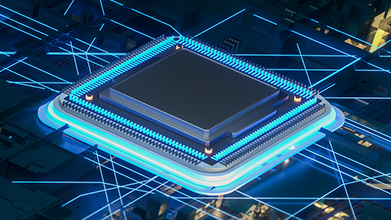Cloud native EDA tools & pre-optimized hardware platforms
Lately television lovers across the world have an even better reason to be glued to the small screens, as 8K Ultra HD TVs have made their way to the market. The HDMI forums most recently released specification, v2.1, explains “higher video resolutions support a range of high resolutions and faster refresh rates including 8K60Hz and 4K120Hz for immersive viewing and smooth fast-action detail…” Most of us are familiar with the word “resolution”, but do we really know this term well?
In a previous blog, HDMI 2.1- Channeling the GenX Audio Video Experience, we mentioned that higher resolution means sharper and clearer image, but to establish this relation, let’s start from the basics.
Pixels
A pixel, or a picture element is a physical point in a picture, where each pixel represents a color. When you zoom into an image, you can see the pixels as shown in the picture below. The higher the total number of pixels, the better the picture.

Resolution is the name for the total number of pixels in a picture. For example, when you plan to upgrade your TV, you generally compare the screen size and resolution. Screen size is easily defined in inches, but most of us are not clear about resolution. Let’s have a look at how the televisions have evolved from 720p to 8K TVs.
720p
High Definition television (HDTV) marked its entry with 720p. The actual resolution for 720p format is 1280×720, where 1280 is the horizontal resolution and 720 is the vertical resolution. The horizontal resolution is the number of pixels from left to right, across the width of the screen (x-axis). The vertical resolution is the total number of pixels from top to bottom, along the y-axis of the screen. Therefore, the total number of pixels in 720p is 921,600 (close to 1 million).
1080p
Next came the era of ‘Full HD’ or 1080p. The actual resolution is 1920×1080. Most HDTVs in our households are Full HD TVs, meaning the total number of pixels is 2,073,600 (over 2 million).
4K
The next big thing was 4K, and it continues to be the most common resolution in the new HDTVs. 4K is also known as ‘Ultra HD’ and has a resolution of 3840×2160. The definition of 4K specifies the horizontal resolution of approximately 4000 pixels, which is almost double the number of pixels in 1080p/HDTV. The total number of pixels in 4K is 8,294,400 (over 8 million).
8K
8K Ultra HD TVs, the biggest and most robust of the bunch, boast a horizontal resolution of approximately 8000 pixels. The actual resolution is 7680×4320, thus making the total number of pixels a whopping 33,177,600 (over 33million pixels). The flagship 8K TV sets by Samsung, Sony and LG are already available on the market with many new ones are in the pipeline. The big TV manufactures have joined hands to form an 8K Association (8KA). The 8KA has laid down the criteria for 8K TVs, which include 8K resolution, up to 60Hz frame rate, minimum 600 nits peak brightness and HEVC Codec video compression. The 8K TVs should have HDMI 2.1 ports to support 8K at 60Hz. HDMI 2.0 standard supported 8K@30Hz but HDMI 2.1 supports 8K@60Hz, where 30Hz and 60Hz are the refresh rates. (Check out our previous blog to learn more about refresh rates – The Future of Gaming Displays.)
The picture below serves as a visual aid to compare resolutions across Full HD, 4K Ultra HD and 8K Ultra HD.

Now that we’ve reviewed the options, let’s have a look at how HDMI has evolved across these different resolutions:

In the HDMI 2.0 standard, the higher resolutions, 4K@120Hz and 8K@30Hz, are achieved with the help of Y′CBCR with 4:2:0 subsampling. However, in the HDMI 2.1 standard, the higher resolutions – 8K@60Hz and 8K@120Hz – are achieved with the help of Digital Stream Compression (DSC). In yet another previous blog, 10K Resolution at 120Hz Display: A Reality Today with DSC 1.2 in HDMI 2.1, we had explained how resolutions as high as 10K@120Hz can be achieved in HDMI2.1.
Synopsys HDMI VIP which supports HDMI 2.1 and DSC is the one-stop solution for the verification of the entire range of high-resolution video formats. To know more about Synopsys display and other VIPs, please visit www.synopsys.com/vip












